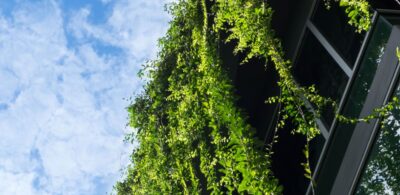NSW the latest state to ban PFAS in firefighting foam
07 April 2021
New South Wales has implemented a progressive ban on the use of firefighting foam containing per- and poly-fluoroalkyl substances (PFAS) which came into effect on 1 April 2021.
The Protection of the Environment Operations (General) Amendment (PFAS Firefighting Foam) Regulation 2021 (PFAS Regulation) amends the Protection of the Environment Operations (General) Regulation 2009 following reforms already implemented in other Australian jurisdictions.
In Queensland, a progressive phase-out was announced in July 2016, with a full ban in place since July 2019. In South Australia, fluorinated firefighting foams have been banned since 30 January 2018,[1] although a two-year grace period allowed industry until 30 January 2020 to comply with the ban.
Staged ban
The restrictions to be implemented under the PFAS Regulation apply to certain PFAS firefighting foams in NSW.[2] Consistent with the approach adopted in Queensland and South Australia, the NSW ban will be implemented in stages.
The first stage involves the ban of the use of PFAS firefighting foam for all training and demonstration purposes from 1 April 2021.
The second stage will come into effect on 26 September 2022 at which point the following will be banned:
- the use of ‘long-chain’ PFAS firefighting foam;
- the use of portable fire extinguishers containing PFAS firefighting foam; and
- the sale of portable fire extinguishers containing the precursor to PFAS firefighting foam.
Sufficient deterrent?
Engaging in any of the above activities is an offence subject to a maximum fine of $44,000 for a corporation or $22,000 for an individual.
Notwithstanding these maximum penalties, each of these offences have been classed as a penalty notice offence under the Protection of the Environment Operations (General) Regulation 2009. A penalty notice (or fine) in the sum of $200 for a corporation or $100 for an individual can be issued for the offences.
Exemptions
Several key exemptions to the ban have been made, including the power for the NSW Environment Protection Authority (EPA) to exempt a person or class of persons from any of the restrictions. The exemption application process is being developed ahead of the September 2022 commencement of the stage 2 restrictions.
Further to the general exemption power of the EPA, the use of long-chain PFAS firefighting foam and portable fire extinguishers containing PFAS will still be permitted where it is used by:
- a ‘relevant authority’ attempting to extinguish a catastrophic fire; or
- persons attempting to extinguish a fire aboard a watercraft within State or prescribed waters in NSW.
A ‘relevant authority’ for the purpose of this exemption means Transport for NSW, a fire brigade or rural fire brigade, a community fire unit or the Port Authority of NSW.
Where a person reasonably believes they are selling the product to a relevant authority, the owner or master of a watercraft, or an exempt person, they are not restricted from selling portable fire extinguishers containing a precursor to PFAS firefighting foam.
Further reform on the horizon
The law dealing with emerging contaminants such as PFAS continues to evolve across the country. Certainly, this reform in NSW flags real concerns about the use of PFAS in industrial or commercial applications.
Outside the regulatory arena, the identification and growing awareness of emerging contaminants, particularly in firefighting foams, will have practical implications for businesses vulnerable to civil action if early steps to limit usage are not taken.
Users of firefighting foams as well as other products that contain PFAS or precursors to PFAS should review their operations. Where possible, and prior to the firefighting ban becoming effective, those users are under increasing pressure to voluntarily phase out their use of the PFAS containing products.
It is inevitable that further similar regulated bans will continue to be rolled out across other states and territories in Australia.
When purchasing firefighting foams, it would also be prudent for end users to require verification that those products do not contain the relevant PFAS compounds subject to the ban. Repeat users of foam will also need to review their waste disposal plans for the management and disposal of any foam wastes.
[1] Environment Protection (Water Quality) Policy 2015 (SA), s 13A (inserted in 2018)
[2] PFAS firefighting foam means: (a) prescribed long-chain PFAS firefighting foam, or (b) firefighting foam containing PFAS, other than (i) prescribed long-chain PFAS firefighting foam, or (ii) firefighting foam containing long-chain PFAS. What is ‘prescribed long-chain PFAS’ is further and technically defined in the PFAS Regulation.
Authors

Partner

Head of Environment and Planning

Head of Gender Equality
Tags
This publication is introductory in nature. Its content is current at the date of publication. It does not constitute legal advice and should not be relied upon as such. You should always obtain legal advice based on your specific circumstances before taking any action relating to matters covered by this publication. Some information may have been obtained from external sources, and we cannot guarantee the accuracy or currency of any such information.
Key Contact
Other Contact
Head of Environment and Planning



